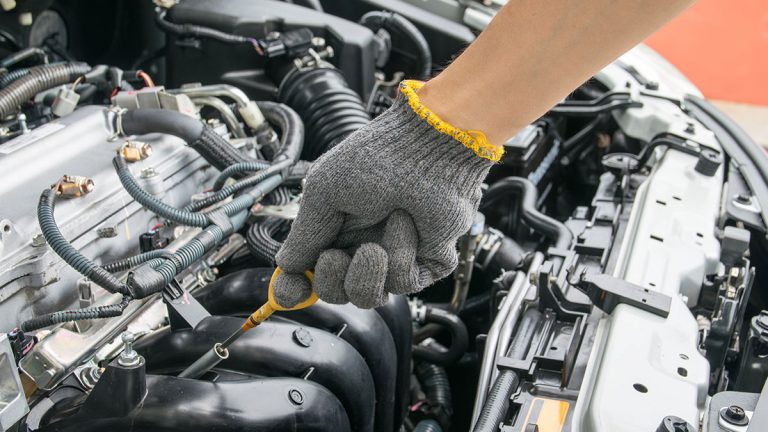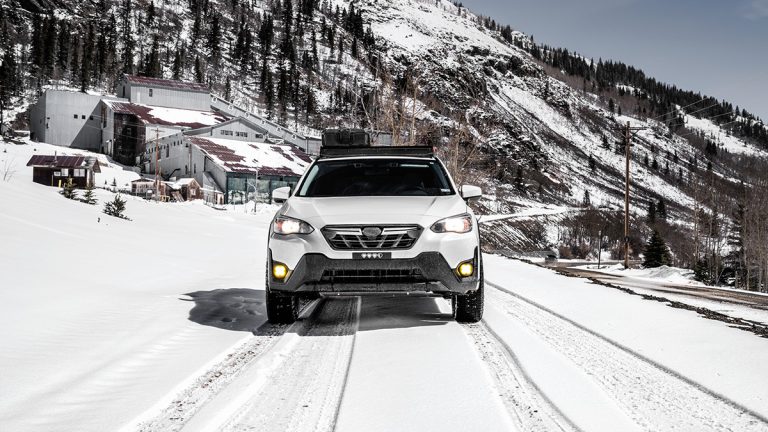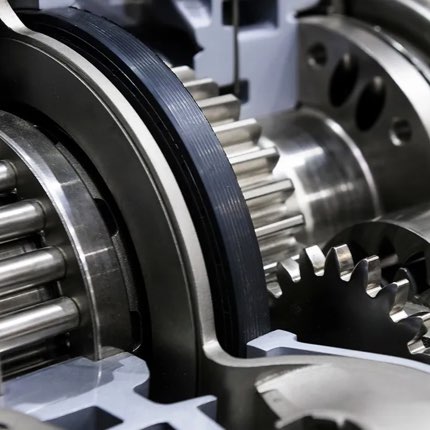Winter is just around the corner, and that means temperatures below freezing and the dreaded routine of starting up an ice-cold car in the morning. It’s tempting to turn the key or hit the remote starter and let it sit for a while to warm up your car before driving off. But idling for long periods is exactly what you shouldn’t do to warm up your car faster.
Cold engines use more gas
When it’s cold, gasoline doesn’t evaporate as well inside your engine to create the right fuel/air ratio needed for combustion. Modern car designs compensate for this issue by pumping more gasoline into the mixture to get things going. The engine will run this way until it heats up to about 40ºF (4.4ºC).
While this gets your engine up and running, the added gasoline isn’t good for the cylinder walls. Gasoline is a powerful solvent that can wash away the oil necessary for lubricating the cylinder walls. This can increase wear and shorten the lifespan of vital engine components.
To warm up your car, drive it…gently
Driving your car is the fastest way to increase engine temperature to 40ºF (4.4ºC) and achieve the desired fuel/air ratio. But use caution – don’t floor it as soon as you hop in and slam the door. It can take several minutes for the engine to fully warm up, so take it easy when you first get going.
A Car and Driver test shows how driving gently warms your car faster than idling. The editors tested how long it took the cabins in a pair of BMW M340i sedans to warm to 72ºF (22ºC), depending on operating conditions.
Driving an average of 39 mph warmed the interior in 9.8 minutes. However, it took 29.6 minutes when idling.
The bottom line
In short, you don’t need to warm up your car before taking off in the winter. Idling your engine too much can reduce its lifespan, and it doesn’t effectively heat up your engine faster.
The best advice is to start your car and only let it sit about a minute or so before driving. Dust off the snow, scrape the ice off your windows and then get on your way. You’ll save fuel – and save your engine in the long run.






Well through experience, I have always started me Jeep Liberty (then) cherokee (now) prior to getting in and driving. 5-10 minutes of idle. The liberty had regular oil changes every 3k. This is before I dedicated all my engine’s to AMSOIL. In summer months 1 minute prior to entering Jeep. 100 miles a day average. I sold the 06 Liberty in 2015 with 220,000 miles on it. Very solid. $4,000 no questions asked. Today it still drives and runs like new. I’m not confident with your article.
3k oil changes: unnecessary
Idling ( prolonged particularity when oil ( not coolant) is not at operating temperature: bad for camshaft wear. Amongst other things
3 k oil changes probably helped reduce some of the excessive wear from unnecessary prolonged idling
Although, running synthetic oil Maybe at a slightly reduced service interval ( if want to be on safe side) would have probably yielded the same or more mileage out of engine.
And of course wasting fuel and not good for environment
Warming up for a minute or so Above idle( 1000-1400 rpm) then driving not too hard will be quite ok for a engine and will bring temperatures up quicker
Thanks
Been driving for 55 years and never had the problems that Amsoil claim ! A warmed up car makes sure everything is working and thawed out,,,windows are clear for safety and all fluids are flowing ! Amsoil is a great product, but you guys dropped the ball on this bad advice !
I have a block heater in my truck so its plugged in untill im ready to start it and its runs untill im ready to leave be it 5 or 10 mins .i like to get into a warm truck before i leave.
That’s really good advice, a must know for all operators.
By idling your vehicle too long it will wear faster and more fuel will end up in the crank case.By driving your vehicle after a minute of idling you get a better ratio of fuel to air (stoichiometric ratio) to burn the fuel more efficiently plus the load on the engine will heat up the engine faster.Listen to these experts as they know what they are talking about and would not lead you down the garden path.
What about warm up in 40f to 50f below zero. Trans and steering also is almost inop unless you warm up!!
Waiting your reply!
For the past 17 years my home always had a garage which I always used to store my car in. That changed six months ago and now that winter is here in Western Pennsylvania I find it is easier to warm up my mini van to help with getting the frost off the windows and when the snow starts to seriously fly will do that too. It saves me time as I warm it up while I eat my morning breakfast which is usually five or ten minutes s morning and by the time I am done my windows are usually halfway or more clear and I don’t have to take time to scrape frost off my windows.
Totally agree with the folks at AMSOIL on this one. I work for a company that has an engine idle policy (as do most municipalities) for their vehicles that are parked outside all winter. No idle of engines for long periods of time and everyone get issued an ice scraper.
Not only does this save our company money on fuel, but at the same time we are being responsible with the environment. Modern synthetic oils such as AMSOIL are designed to work in cold weather.
As someone who works with steel everyday, I would say any excessive force on cold, brittle steel is a problem waiting to happen
well, up in Northern Canada even with a block heater plugged in, hopping into a vehicle at -35c isn’t fun. long service life for the engine hasn’t been an issue in my long lifetime. these days OEM oil changes are out beyond 35,000 km for my diesel and 30,000 km for out gas engines – cut that in half and warm it up all you want. the engine will be fine and your ass will be warm.
Diesel motors need to be warmed up, thus warming up the fuel, gelled fuel can be a lean condition for the motor
no idle of engines for long durations of time and all of us get issued an ice scraper.
Hi Jamie! Great tips you have shared with us, very informative and helpful. Does having a have a block heater in a truck, plugged in until it is ready to start it and it runs until it is ready to leave be it 5 or 10 mins .i would help to get a warm truck before it leaves? All the best!
With the topic of those should let their vehicle warm up or immediately drive off in winter after a cold start when those hope they remember the days of carbureted vehicles which needed time to warm up when they know to go out at the moment the engine is racing and give the accelerator a quick pump to let the engine settle down to low speed idle. With fuel injected engines need only a few seconds of warm up before operating normally.
Been driving for 72 years and got my first AMSOIL oil change in Denver Col. in late 1972, and I can say have never gone wrong following AMSOIL advice. They are the experts on lube for your vehicle, What are yours John ????